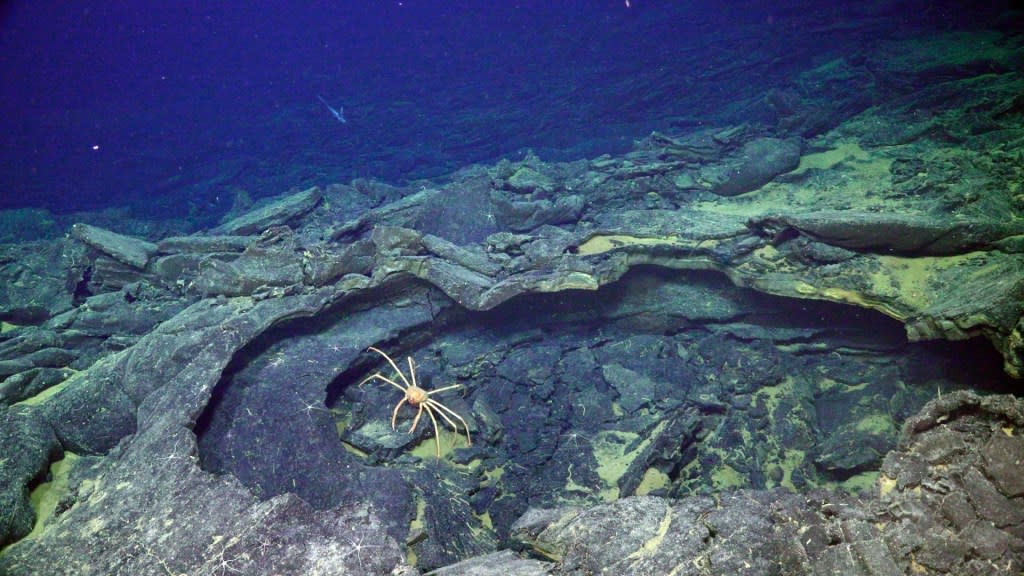Axial Seamount: The Dynamic Underwater Volcano Off Oregon’s Coast

Axial Seamount is generating global attention as one of the most closely monitored and active underwater volcanoes on Earth. Located nearly 300 miles off the coast of Oregon and nearly a mile beneath the surface of the Pacific Ocean, this seafloor giant sits atop the Juan de Fuca Ridge, where tectonic forces constantly shape the ocean floor.
What Makes Axial Seamount Unique?
Axial Seamount differs from typical land volcanoes in several ways. It’s positioned at a geological hotspot on a spreading ridge, a place where the Pacific and Juan de Fuca tectonic plates drift apart. Here, molten rock from the Earth’s mantle rises and forms new oceanic crust. This geological combination means Axial Seamount experiences frequent eruptions and seismic activity, making it a prime natural laboratory for scientists.
According to NBC News, recent studies have found increasing seismic activity and swelling at Axial Seamount. Researchers have observed over 1,000 daily earthquakes and an inflating volcano structure, signs that magma is accumulating beneath the surface.
Signs of Impending Eruption
This underwater volcano has erupted three times since 1998, with the last eruption in 2015. Each eruption was preceded by a dramatic increase in earthquakes and steady inflation of the seafloor, as magma built up beneath the caldera. In the month-long 2015 event, the volcano produced more than 10,000 earthquakes in a single day and sent lava flows up to 25 miles (40 km) across the seafloor.
Current monitoring efforts by the National Science Foundation’s Ocean Observatories Initiative and the University of Washington have detected similar warning signs this year. As described by CNN, scientists believe Axial Seamount could erupt anytime between now and early next year. The pattern of previous eruptions points to a likely timeframe between January and April, possibly influenced by gravitational forces from the moon that affect ocean tides and seafloor pressure.
Life Thrives at the Seamount’s Hydrothermal Vents
Despite the extreme environment, the Axial Seamount is home to thriving ecosystems. Mineral-rich hydrothermal vents on the caldera floor support unique life forms that survive in total darkness, feeding on chemical energy rather than sunlight. These vents emit plumes of hot, mineral-laden fluid, creating spectacular white streams termed “snowblowers” by scientists.
Even after lava flows wipe out these tiny communities, recovery is swift. Within just a few months after an eruption, microbial and animal life returns, as reported by the Yahoo news article on the seamount’s biodiversity. Such resilience highlights the interconnectedness of geological and biological processes deep beneath the ocean’s surface.
Why Study Axial Seamount?
Axial Seamount is more than an area of intense scientific curiosity; it provides a rare glimpse into the processes that build and sustain our planet. Because its eruptions happen underwater and far from populated areas, researchers can closely monitor and even livestream future events without risk to human life. This allows for the refinement of volcanic forecasting models, which could improve eruption predictions around the world.
For more on the ongoing monitoring and future eruption forecasts, read the full coverage at NBC News and the insightful scientific perspectives at CNN.
What Does the Future Hold?
Experts agree that while life on land is unlikely to be impacted, every new eruption of Axial Seamount provides unprecedented data. Observing these hidden volcanic processes helps scientists understand how our ocean floor is created and maintained. It also reveals how life endures in extreme habitats on our ever-changing Earth.
Stay tuned to observatory updates for a chance to witness the next underwater eruption, as technology may soon allow live streaming of this extraordinary event. The restless Axial Seamount continues to fascinate, educate, and broaden our understanding of volcanic and biological activity beneath the waves.